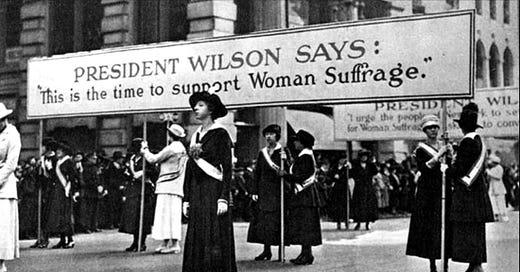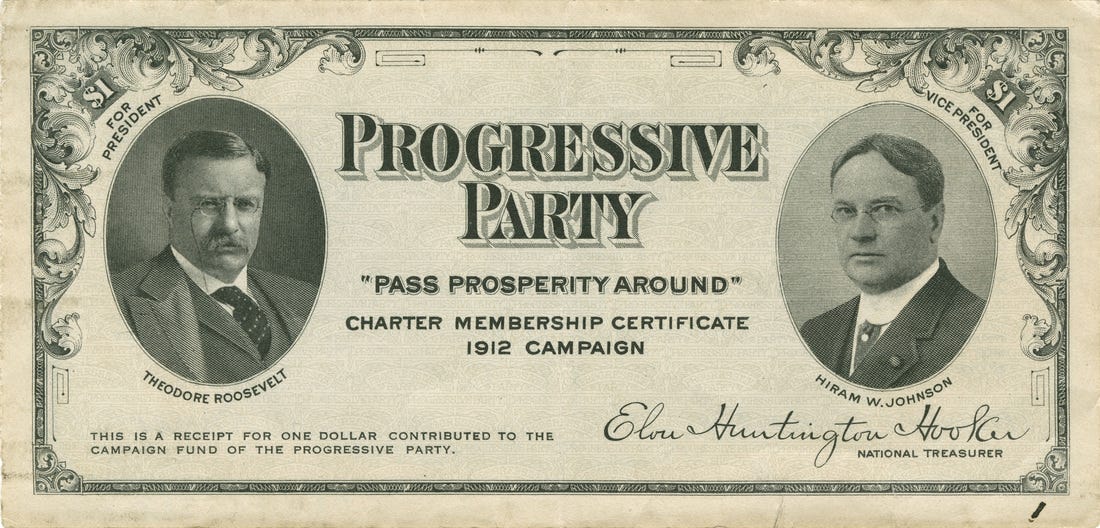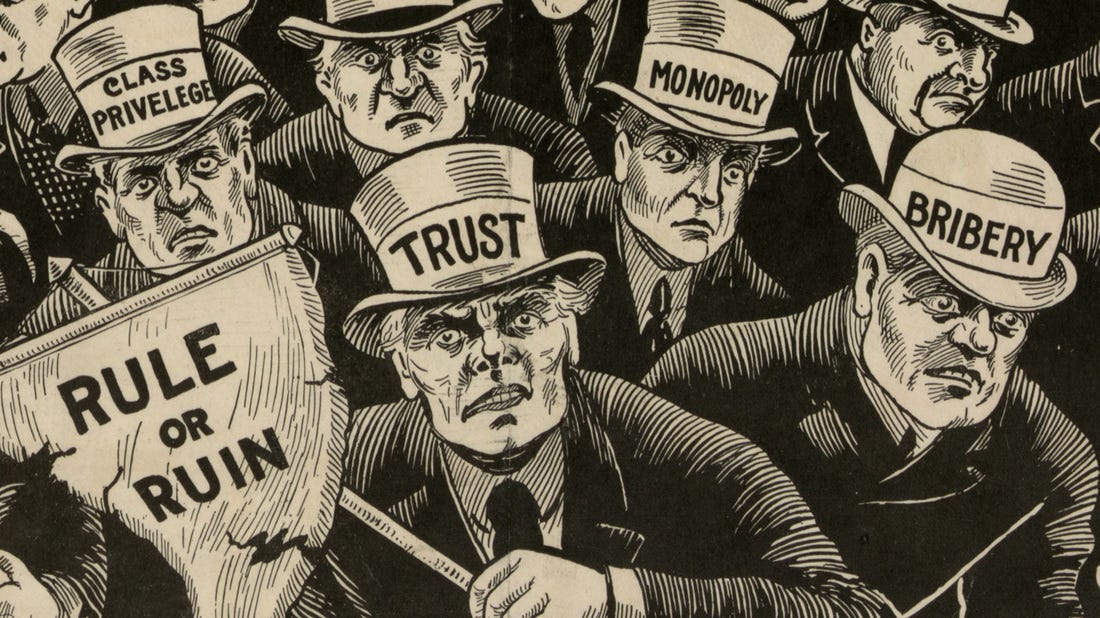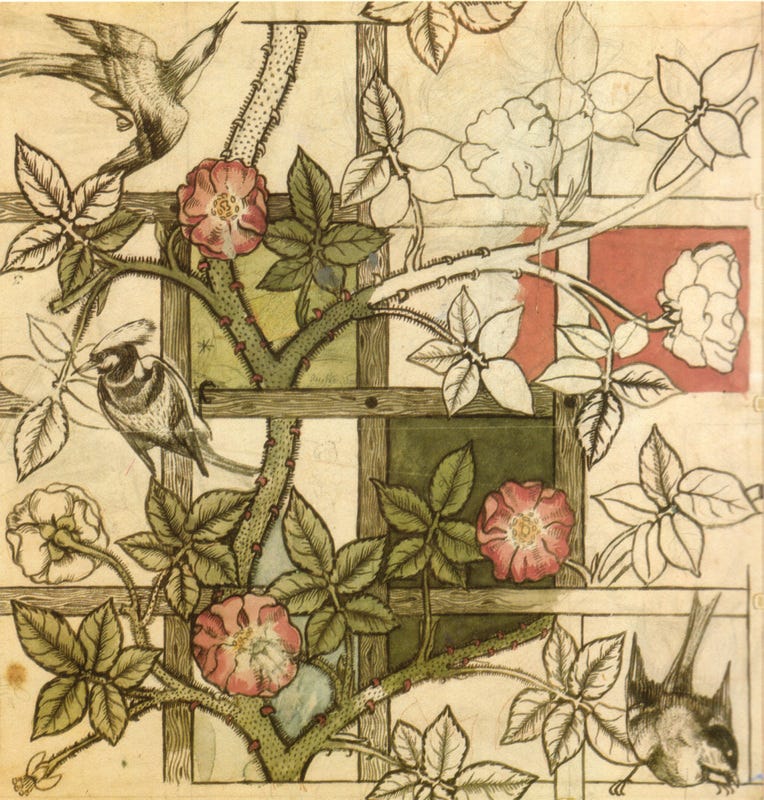The Progressive Era
The second in a Series of Essays on how we got the Progressive Conservative Party of Nova Scotia
The Progressive Era
8/7/2016
2. Activists, Muckrakers, Saloon Owners, Craftsmen and Technocrats
Over four blog posts, I'm writing about how Nova Scotia's Progressive Conservative Party got its name and structure.
“Never in the history of the world was society in so terrific flux as it is right now,” Jack London wrote in Iron Heel, his 1908 dystopian novel in which a corporate oligarchy comes to rule the United States. He wrote, “The swift changes in our industrial system are causing equally swift changes in our religious, political, and social structures. An unseen and fearful revolution is taking place in the fiber and structure of society. One can only dimly feel these things, but they are in the air, now, today.”
Here’s a brief timeline of Progressive Conservative Party founder John Bracken's political career:
1883: Born on June 22, in Ellisville, Ontario, Canada.
1920: Became President of the University of Manitoba, a position he held until 1943. This non-political academic role set the stage for his entrance into politics.
1922: Entered politics as the leader of the Progressive Party in Manitoba. He was invited to take this position despite having no prior political experience due to his reputation as an academic and agricultural expert.
1922: Elected Premier of Manitoba, serving as head of a coalition government. Under his leadership, Manitoba became known for its pragmatic approach to politics and its focus on agriculture and fiscal responsibility.
1930s: Advocated for a "Progressive-Conservative" approach, promoting cooperative policies over partisan ones. This blend of ideologies would later define his federal political stance.
1942: Invited to lead the federal Conservative Party of Canada. Upon accepting, he insisted on renaming it to the Progressive Conservative Party to reflect his more inclusive and modern vision.
1945: Elected as a Member of Parliament for the Neepawa riding in Manitoba.
1945: Fought in the federal election as leader of the Progressive Conservatives. Although the party made gains, it did not win power. Bracken was considered more of a caretaker leader, bringing stability and a broader appeal to the party.
1948: Stepped down as leader of the Progressive Conservative Party, making way for George Drew to take over.
1969: Passed away on March 18, in Winnipeg, Manitoba, leaving behind a legacy of coalition-building and modernization within Canadian conservatism.
Bracken’s unique path into politics, as an academic rather than a career politician, shaped his pragmatic and cooperative style, which influenced the Progressive Conservative Party for decades.
Passing Prosperity Around
As their name suggests, the Progressive Party of Manitoba that John Bracken eventually led were inspired by the Progressive Movement in the United States. The early 20th century Progressive era was a time of social activism and political reform that engaged the new middle class, leery of both business elites and radical politics.
Disturbed by the waste, inefficiency, stubbornness, corruption and injustices of the Gilded Age Robber Barons, saloon owners and their political machines, the Progressives were committed to changing and reforming every aspect of the state, society and economy, but not changing what was good about America.
They were informed by Muckrakers - journalists who exposed waste, corruption, and scandal in the highly influential new medium of national magazines. Today we'd call them investigative journalists and in our digital age of corporatized media a community is lucky to have even one. They are indispensable to the well-being of society.
Scientific Management
The Progressives were avid modernizers; they believed in the ideals of science and technology as the grand solution to society's weaknesses, and that reforming education was fundamentally always the long-term answer to all social and economic problems.
Progressivism included a favorable attitude toward country life and urban-industrial society, belief in mankind's ability to improve the environment and conditions of life, and belief in an obligation to intervene in economic and social affairs. Women embraced the Progressive movement and organized on behalf of social reforms. They were especially concerned with prohibition, suffrage, school issues, and public health. It was a period of widespread social activism and political reform across the United States, which has come to be summarized as The New Deal. A main objective of the Progressive movement was eliminating waste and inefficiency in government. The movement sought further means of direct democracy. They wanted big corporations and powerful rich influencers brought into check. They wanted fair competition, equality, equity and liberation.
The reason many supported prohibition was because big business developer saloon owners (think Boardwalk Empire or developers and casino operators of today) wielded so much power and political influence they were controlling government. Progressivism also promoted the Efficiency Movement in every sector that could identify old ways that needed modernizing, and bring to bear scientific, medical and engineering solutions; a key part of the efficiency movement was scientific management of government decision-making, or "Taylorism".
Country Life
Central to the progressive era was the Country Life Movement. As late as 1920 half of all Americans lived in rural regions just like Nova Scotia today. The country life movement worked to improve the living conditions of rural residents. The movement focused on preserving traditional rural lifestyles while addressing poor living conditions and social problems within rural communities. Despite the movement's rural focus, many of its adherents were urbanites who sought to bring progressive changes and technological improvements to rural areas. The movement didn’t try to urbanize rural life but promoted the culture and economy of country life as valuable to all society. They worked to enhance the advantages of rural living. This was done by introducing the Progressive ideals of modernization, technological progress and scientific management along with writing about The Good Life and what people really value in this world.
Styles and ideas associated with the Country Life movement are still popular today. The Arts and Crafts movement, Mission, and Craftsman styles often associated with Gustav Stickley and William Morris rose from the Progressive ideals of Country Life. These styles stood for traditional craftsmanship using simple forms, and often used medieval, romantic, or folk styles of decoration. Arts and Crafts advocated economic and social reform and was essentially anti-industrial.
The Craftsman bungalow style advocated simple built in furnishings and even today 100 years later stands as the household ideal of useful, timeless beauty.
A Sears Bungalow
Technocrats
Like many old political terms the word technocrat has gone thorough a range of meaning and lost favour. It was originally meant to describe people who advocated using science to solve social and economic problems. This is why John Bracken, an agriculturalist, was so attractive to the United Farmers of Manitoba, the Progressive Party and the Federal Conservatives. Though he was a political outsider who was an openly anti-party, non-partisan coalition builder, he was also president of the Manitoba Agricultural College and represented the technocratic ideals of the Progressive movement perfectly. He introduced a management-centred approach to government using the building blocks of farms and households.
Bracken's Progressive Party principles were well received in Nova Scotia. With muckrakers and agriculturalists in place, we quickly took up the styles of the Arts and Crafts movement.









